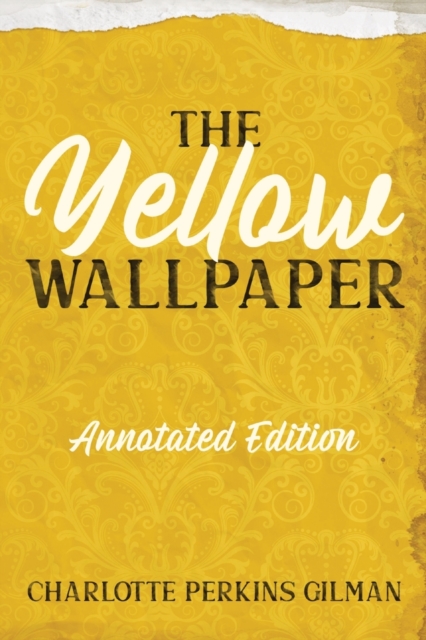The Yellow Wallpaper: Annotated Edition with Key Points and Study Guide

The Yellow Wallpaper: Annotated Edition with Key Points and Study Guide
"The Yellow Wallpaper," first published in 1882, is largely based on the personal experience of Charlotte Perkins Gilman. Like many women of that era, Gilman was subjected to the "rest cure" for postpartum depression. The cure, pioneered by Silas Weir Mitchell, forbade reading, writing, socializing, exercise, and thinking in general. For many women, the treatment was worse than the cure.
The story chronicles the story of a women diagnosed with a "slight hysterical tendency" and shut up in a wallpapered yellow room in an old mansion over the summer. With no intellectual stimuli other than the wallpaper, the narrator becomes increasingly intrigued with its intricate pattern, twisting and turning it in her mind until she sees a woman on all fours crawling creeping behind the pattern.
Believing she must free the woman in the wallpaper, the narrator secretly begins stripping it from the walls. Tension mounts between the characters in the story, right along with the narrator's increasing derangement. The story reaches its peak as the narrator increasingly identifies herself as the trapped old woman. When her husband finally discovers her in this sorry state, he faints on the spot. The narrator, unfazed, continues creeping over his body each time she circles the room, trying to free the old woman-and ultimately herself, from the wallpaper's deeply disturbing pattern.
The book's indictment of the "rest cure" contributed, eventually, to its discontinuation. The patronizing attitudes and actions of the narrator's husband, combined with her childish position, drove her to retreat into the only place she was allowed to actively use her mind or exercise the slightest bit of control over her life-the yellow wallpaper. Forced to pretend that her marriage was happy, forced to pretend that she was overcoming depression, and restricted from any form of self-expression, the narrator was eventually driven insane. The importance of patient input into their treatment, as well as of self-expression, are important themes of this classic feminist work.
PRP: 32.98 Lei
Acesta este Prețul Recomandat de Producător. Prețul de vânzare al produsului este afișat mai jos.
29.68Lei
29.68Lei
32.98 LeiLivrare in 2-4 saptamani
Descrierea produsului
"The Yellow Wallpaper," first published in 1882, is largely based on the personal experience of Charlotte Perkins Gilman. Like many women of that era, Gilman was subjected to the "rest cure" for postpartum depression. The cure, pioneered by Silas Weir Mitchell, forbade reading, writing, socializing, exercise, and thinking in general. For many women, the treatment was worse than the cure.
The story chronicles the story of a women diagnosed with a "slight hysterical tendency" and shut up in a wallpapered yellow room in an old mansion over the summer. With no intellectual stimuli other than the wallpaper, the narrator becomes increasingly intrigued with its intricate pattern, twisting and turning it in her mind until she sees a woman on all fours crawling creeping behind the pattern.
Believing she must free the woman in the wallpaper, the narrator secretly begins stripping it from the walls. Tension mounts between the characters in the story, right along with the narrator's increasing derangement. The story reaches its peak as the narrator increasingly identifies herself as the trapped old woman. When her husband finally discovers her in this sorry state, he faints on the spot. The narrator, unfazed, continues creeping over his body each time she circles the room, trying to free the old woman-and ultimately herself, from the wallpaper's deeply disturbing pattern.
The book's indictment of the "rest cure" contributed, eventually, to its discontinuation. The patronizing attitudes and actions of the narrator's husband, combined with her childish position, drove her to retreat into the only place she was allowed to actively use her mind or exercise the slightest bit of control over her life-the yellow wallpaper. Forced to pretend that her marriage was happy, forced to pretend that she was overcoming depression, and restricted from any form of self-expression, the narrator was eventually driven insane. The importance of patient input into their treatment, as well as of self-expression, are important themes of this classic feminist work.
Detaliile produsului









